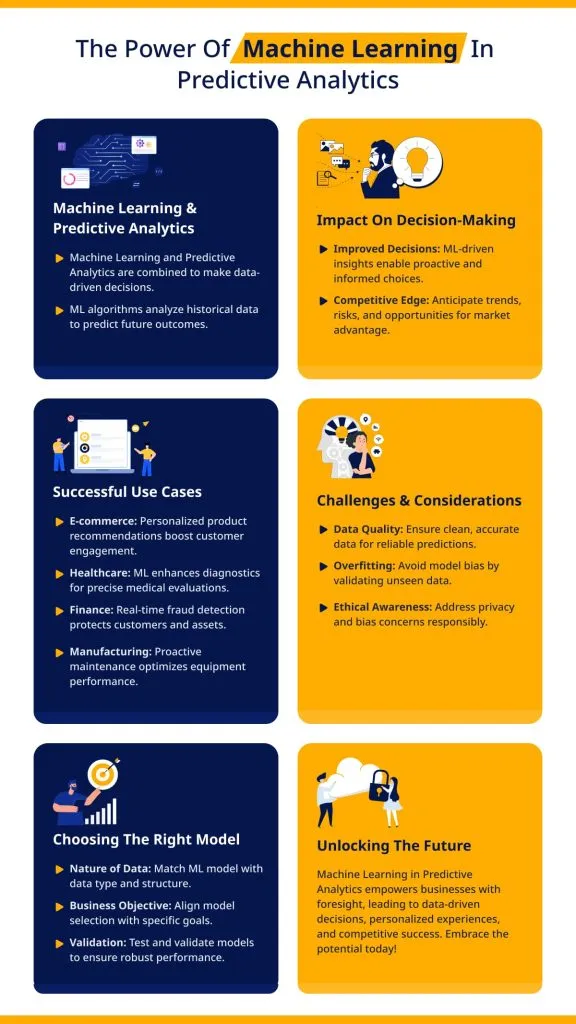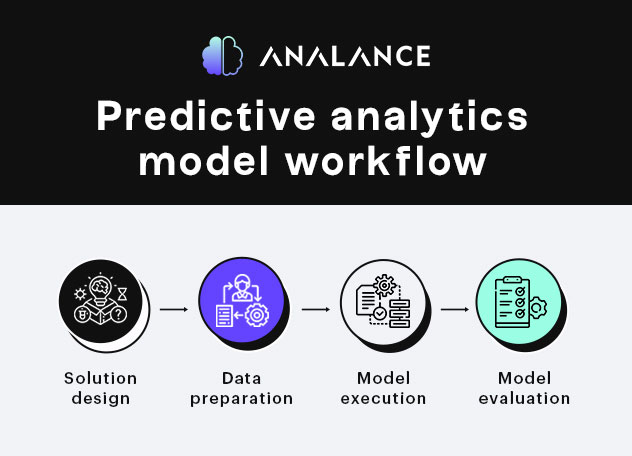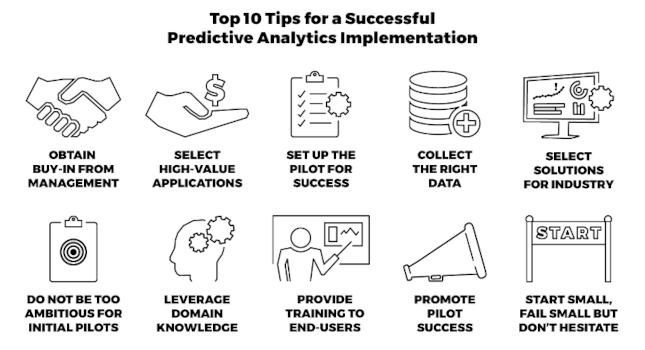
Introduction
Overview of Predictive Analytics
Predictive analytics is revolutionizing how businesses approach their strategies and decisions. By utilizing statistical algorithms and machine learning techniques, organizations can analyze historical data to predict future outcomes. Imagine a retail store anticipating which products will fly off the shelves during a holiday season, enabling them to optimize inventory and enhance customer satisfaction – that’s the power of predictive analytics at work.
The process typically involves:
- Data Mining: Extracting relevant information from large datasets.
- Statistical Modeling: Applying mathematical models to reveal trends and patterns.
- Forecasting: Making informed predictions based on data analysis.
Importance of Machine Learning in Predictive Analytics
Machine learning is the heartbeat of predictive analytics. It empowers organizations to develop more sophisticated models that can learn from data over time, improving their accuracy and effectiveness.
For instance, consider a financial institution that uses machine learning to analyze customer transaction patterns. By doing so, they can identify potential fraud more efficiently than ever before. Key importance includes:
- Adaptivity: Models that evolve with new data inputs.
- Speed: Rapid analysis of large datasets.
- Precision: Enhanced accuracy in forecasting outcomes.
As illustrated, leveraging machine learning for predictive analytics not only optimizes operations but also drives informed decision-making in business settings. This mindset is crucial for companies that want to stay ahead in a competitive market.

Understanding Machine Learning
Definition and Basics of Machine Learning
At its core, machine learning is a subset of artificial intelligence that allows systems to learn and make decisions without being explicitly programmed for every task. Think of it as teaching a kid how to ride a bike; initially, they may wobble and fall, but with practice and adjustments, they improve over time. Similarly, machine learning algorithms adapt and refine their performance as they process more data.
The basics of machine learning can be outlined as follows:
- Data Input: Information fed into the system.
- Modeling: The process of creating algorithms that recognize patterns.
- Output: Prediction or classification based on learned patterns.
Types of Machine Learning Algorithms
Machine learning algorithms can be broadly classified into three main types, each serving different purposes:
- Supervised Learning: The model learns from labeled data. For example, if you train a model with a dataset of emails marked as “spam” or “not spam,” it will classify new emails accordingly.
- Unsupervised Learning: This type deals with unlabeled data. For instance, clustering algorithms can categorize customers into segments based on purchasing behavior, revealing hidden patterns.
- Reinforcement Learning: Here, an agent learns by interacting with its environment and receiving feedback (rewards or penalties). It’s like teaching a dog new tricks; with patience and practice, the dog learns what behaviors will earn it treats.
Understanding these fundamentals equips businesses to harness machine learning effectively, further enhancing their predictive analytics capabilities.

Applications of Predictive Analytics in Business
Customer Relationship Management
Predictive analytics is a game-changer for customer relationship management (CRM). By analyzing customer data, businesses can personalize their marketing efforts, enhancing customer satisfaction and loyalty. For instance, a coffee shop might analyze purchase patterns to tailor promotions, offering discounts on a customer’s favorite drink during their usual visit time.
Key benefits include:
- Customer Segmentation: Grouping customers based on behavior allows for targeted marketing.
- Churn Prediction: Identifying at-risk customers enables proactive engagement strategies.
Supply Chain Management
In supply chain management, predictive analytics optimizes inventory levels and enhances operational efficiency. Businesses can forecast demand and supply fluctuations, minimizing stockouts or excess inventory.
For example, a grocery store can predict seasonal demand for fresh produce, ensuring they stock the right amount without waste. Important aspects are:
- Inventory Optimization: Reducing holding costs through accurate demand forecasts.
- Supplier Selection: Analyzing historical data to choose the best suppliers based on reliability.
Financial Forecasting
Financial forecasting is another realm where predictive analytics shines. By examining past financial data, businesses can make informed decisions about budgeting and investments.
Consider a startup using predictive models to analyze market trends; they can project revenue more accurately, paving the way for strategic planning. Key features include:
- Risk Assessment: Evaluating potential financial risks before they materialize.
- Investment Strategies: Determining the most lucrative opportunities based on data-driven insights.
In summary, incorporating predictive analytics into these areas empowers businesses to make smarter decisions, ultimately driving growth and success.

Implementing Machine Learning Models
Data Collection and Preparation
The journey of implementing machine learning models begins with data collection and preparation. Think of this stage as gathering ingredients for a recipe – the quality and relevance of those ingredients will determine the final dish’s success. Businesses need to source data that is not only extensive but also relevant to the problem they are solving.
Steps to efficient data collection include:
- Identifying Data Sources: Use internal databases, public datasets, or APIs to gather diverse data.
- Cleaning Data: Remove duplicates, handle missing values, and correct inconsistencies – this ensures the data is reliable.
- Feature Selection: Choose the most relevant attributes to help the model make accurate predictions.
Model Building and Evaluation Techniques
Once the data is ready, it’s time to build and evaluate the model. This phase resembles constructing a house; a solid foundation leads to stability and performance.
Key steps in model building include:
- Choosing an Algorithm: Select from supervised, unsupervised, or reinforcement learning based on your goals.
- Training the Model: Use your cleaned dataset to fit the model and allow it to learn patterns.
- Evaluation Techniques: Implement methods such as cross-validation, accuracy metrics, confusion matrices, or ROC curves to assess model performance.
By diligently navigating these stages, businesses can effectively harness machine learning’s full potential, driving insights that lead to informed decision-making and strategic growth.

Challenges and Considerations in Predictive Analytics
Data Privacy and Security
As businesses harness the power of predictive analytics, one of the most pressing challenges is ensuring data privacy and security. With increasing regulations and customer awareness, mishandling sensitive information can lead to severe consequences.
For instance, imagine a retail company that collects customer data to personalize offers but then experiences a data breach. Not only does this erode customer trust, but it can also lead to hefty fines. To mitigate these risks, businesses should:
- Implement Strong Security Measures: Use encryption, firewalls, and secure access protocols.
- Adopt Data Minimization Practices: Collect only the data necessary for analysis to reduce the impact of potential breaches.
- Stay Compliant with Regulations: Be aware of laws like GDPR or CCPA that govern data collection and usage.
Ethical Implications
Alongside privacy concerns, the ethical implications of predictive analytics cannot be overlooked. With powerful algorithms, businesses must be cautious of biases in their models that can lead to unfair outcomes. For example, if a lending algorithm disproportionately rejects applicants from certain demographics, it raises questions of equity.
To navigate these ethical waters, consider:
- Bias Detection and Mitigation: Regularly audit models for biases and adjust accordingly.
- Transparency: Clearly communicate how data is used and how decisions are made.
By addressing these challenges head-on, businesses can responsibly leverage predictive analytics, fostering a culture of trust and integrity while driving innovative solutions forward.

Future Trends in Predictive Analytics
Advancements in Deep Learning
As we look to the future, one of the most exciting trends in predictive analytics is the rapid advancement of deep learning. This subset of machine learning mimics human brain functions to process vast amounts of unstructured data more efficiently than traditional methods.
For instance, companies are now using deep learning algorithms to analyze images and natural language, leading to innovative applications. Consider a health tech company analyzing medical images to predict diseases early. With enhanced accuracy and speed, deep learning is transforming how businesses leverage predictive analytics. Key advantages include:
- Improved Accuracy: Complex neural networks can identify patterns that simpler models might miss.
- Automation of Feature Engineering: These models can automatically derive features from raw data, simplifying the analytical process.
Integration of AI with Predictive Analytics
The integration of artificial intelligence with predictive analytics promises to revolutionize decision-making in businesses. AI can enhance predictive models by incorporating real-time data analysis and automation, resulting in faster insights.
Imagine a logistics company using AI-driven predictive analytics to optimize delivery routes in real-time, adjusting for traffic and weather. Benefits of this integration include:
- Greater Agility: Responding more quickly to market changes and customer demands.
- Enhanced Personalized Experiences: Tailoring services or products based on predictive insights.
As these trends unfold, companies embracing these advancements will gain a competitive edge, leading them towards a more data-driven future.

Case Studies of Successful Implementation
Retail Industry
The retail industry showcases a remarkable example of predictive analytics in action, particularly through the case of Target. This leading retailer uses predictive analytics to optimize inventory management and personalize marketing strategies. For instance, by analyzing purchasing patterns, Target can forecast demand for specific products during peak seasons, ensuring stock levels meet customer needs.
Additionally, Target employs sophisticated algorithms to personalize marketing efforts, sending tailored offers to customers based on previous purchases. Some notable outcomes include:
- Increased Sales: Target reported a significant boost in sales during promotional campaigns driven by data insights.
- Enhanced Customer Satisfaction: Customers appreciate personalized marketing, leading to improved loyalty and repeat visits.
Healthcare Sector
In the healthcare sector, predictive analytics is transforming patient care, as evidenced by Mount Sinai Health System’s implementation. They utilize predictive models to identify patients at risk of readmission, enabling proactive interventions.
This approach has led to:
- Reduced Readmission Rates: By anticipating complications, healthcare professionals can engage with patients more effectively post-discharge.
- Improved Resource Allocation: Hospitals can better manage staff and resources, enhancing overall efficiency.
These case studies highlight how predictive analytics can drive significant improvements in both retail and healthcare, offering valuable lessons for businesses across various sectors.

Conclusion
Recap of Benefits of Using Machine Learning for Predictive Analytics
As we’ve explored throughout this blog, the integration of machine learning into predictive analytics offers profound benefits for businesses across various industries. In summary, these advantages include:
- Enhanced Decision-Making: Businesses can make data-driven decisions with greater confidence.
- Increased Efficiency: Automated processes and accurate forecasts streamline operations, saving time and resources.
- Personalized Customer Experiences: Organizations can tailor their offerings to meet individual customer needs, fostering loyalty and satisfaction.
For example, a marketing team that utilizes machine learning can adjust campaigns in real time, optimizing engagement and conversion rates.
Call to Action for Businesses to Embrace Predictive Analytics
Now is the time for businesses to embrace predictive analytics powered by machine learning. With the right tools and strategies, companies can uncover valuable insights that drive growth and innovation. Don’t get left behind! Start your journey by:
- Investing in Data Infrastructure: Ensure your organization has access to quality data.
- Training Your Team: Equip your staff with the necessary skills to leverage these technologies.
- Experimenting with Models: Begin implementing small-scale predictive models to see results.
By taking these proactive steps, businesses can position themselves at the forefront of their industries, ready to navigate the challenges and opportunities that lie ahead.

